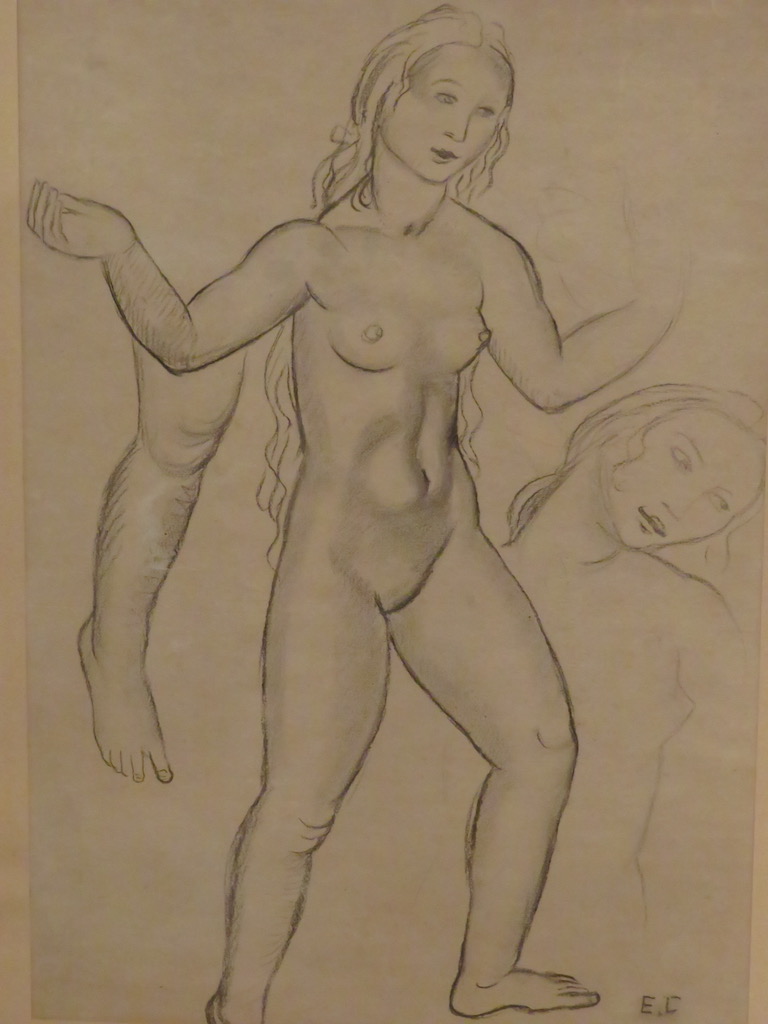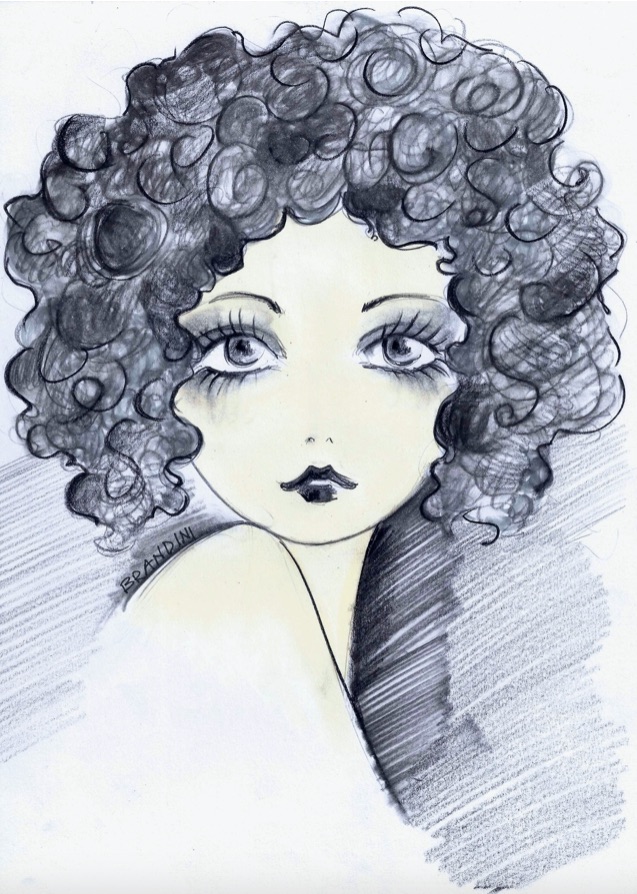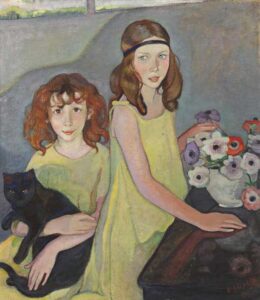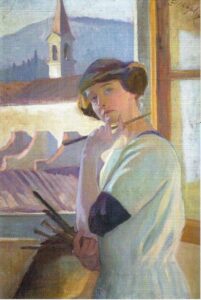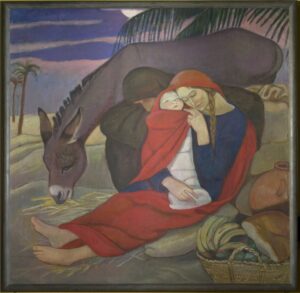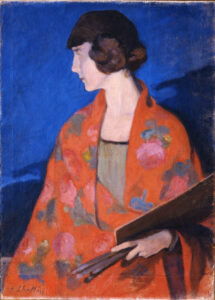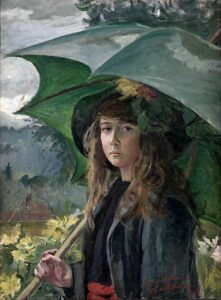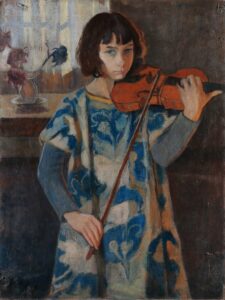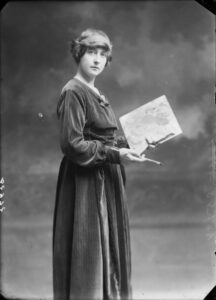“Female Nude Study”. Elizabeth Chaplin
“The portrait” of Beatrice Brandini
The number of women who are part of the self-portrait collection kept in the Uffizi is small, Elisabeth Chaplin is one of the few, a real exception.
Elisabeth Chaplin: Young Girls in Yellow
And she is in excellent company, in fact, with this good French painter, but Italian by adoption, there are very precious self-portraits collected, among these those of Rembrandt, Velazquez, Guttuso, Chagall…
Elisabeth Chaplin: Self-Portrait, 1910
Born in France into a family of artists, her grandfather is Charles Chaplin, she moved to Tuscany in the early twentieth century, and a bond remained with this land that was never broken. The Uffizi allowed her to study and copy the greatest Renaissance masters, her talent and will did the rest of her.
Elisabeth Chaplin: Rest in Egypt, 1929
In 1910 she received, with her work the “Family portrait”, the gold medal of the Florentine Society of Fine Arts. In 1914 she participated in the Venice Biennale, in 1922 at the Paris Salon. Followed another Biennale, in 1920, and from here a series of important successes and approvals.
In Paris, where the family moved after stays in Florence and Rome, she created two large murals in the church of Notre-Dame-du-Salut and in the Church of Saint-Esprit. In 1937 she received the gold medal at the Paris International Exposition and in 1938 the Legion of Honor.
Elisabeth Chaplin: Self-Portrait with Shawl, 1912
Landscapes, self-portraits and family portraits are her favorite subjects, her influences are the impressionist ones of the late nineteenth century, but also the Macchiaioli and art deco.
Elisabeth Chaplin: Autoritratto, Galleria degli Uffizi.
Chaplin represented a real revolution for Florence, the Uffizi bought three of her paintings, but not only that, they asked her to donate the famous “Self-portrait with a green umbrella” of 1908, in which Chaplin is in connection with nature surrounding.
Elisabeth Chaplin: Portrait of my sister.
Currently the Pitti Palace Gallery collects something like seven hundred works by this extraordinary artist, unfortunately many of which are not visible to the public. This number reveals two things to us, the first is that she is probably the female artist with the largest number of works held in Florentine public collections, the second, less reassuring, is that we will probably never have the pleasure of admiring them, a sort of artistic, that of Chaplin, which has not always kept the deserved success.
A beautiful image of Elisabeth Chaplin
I was lucky enough to buy a small work of hers, I immediately fell in love with it. I find that in Chaplin’s paintings there is an indisputable artistic value, but also an infinite sweetness and melancholy. The work of an artist is to convey emotions, certainly Elisabeth Chaplin has largely carried out this mission.
Good life to everyone!
Beatrice


